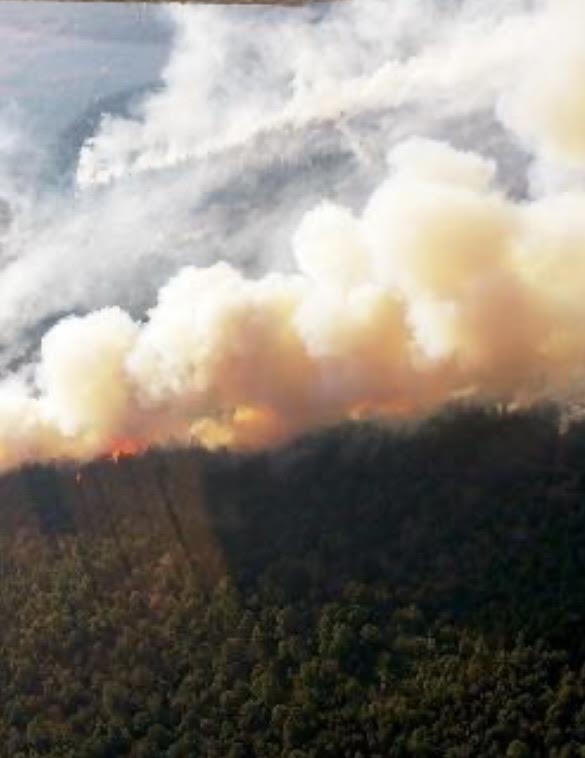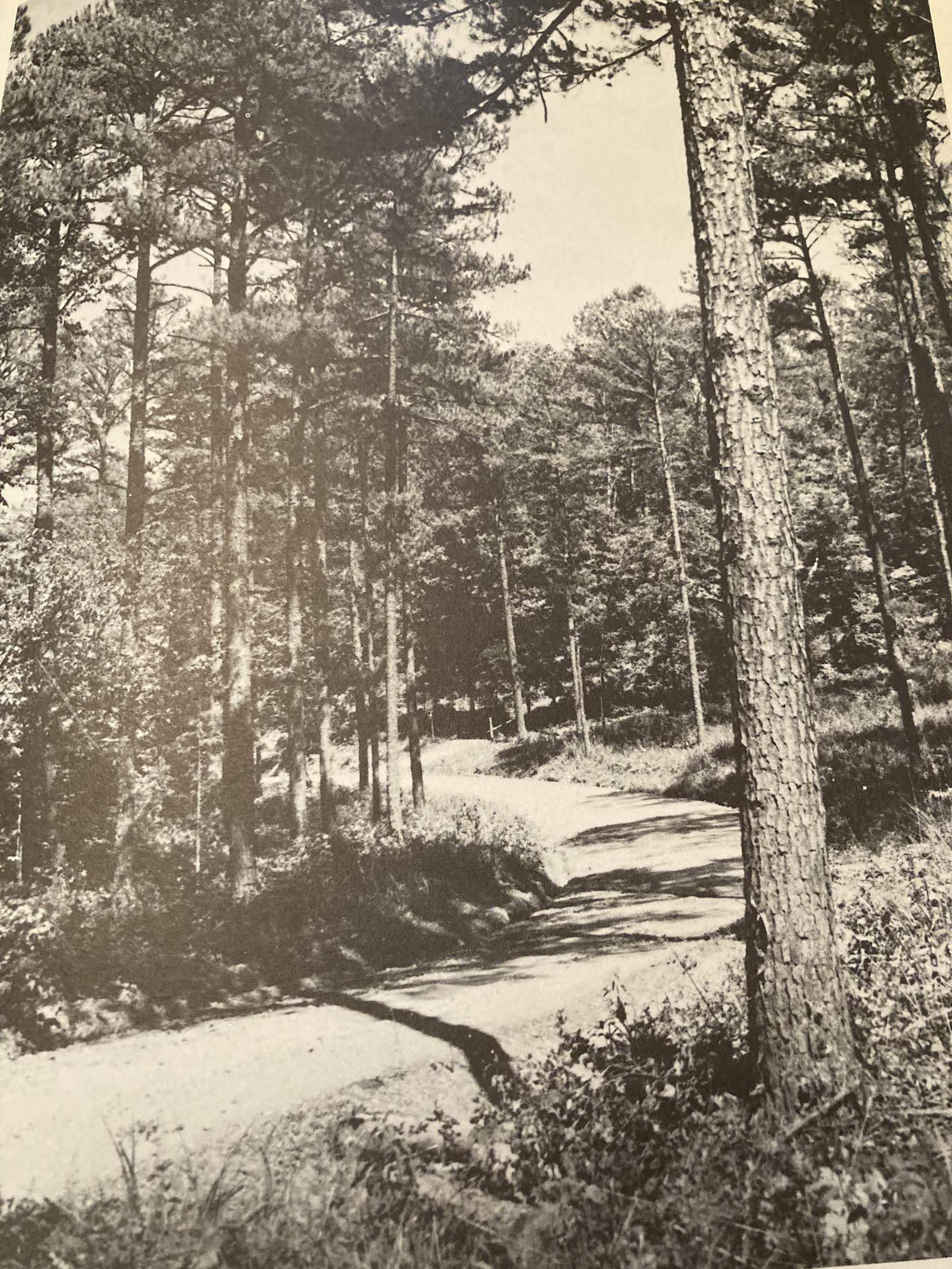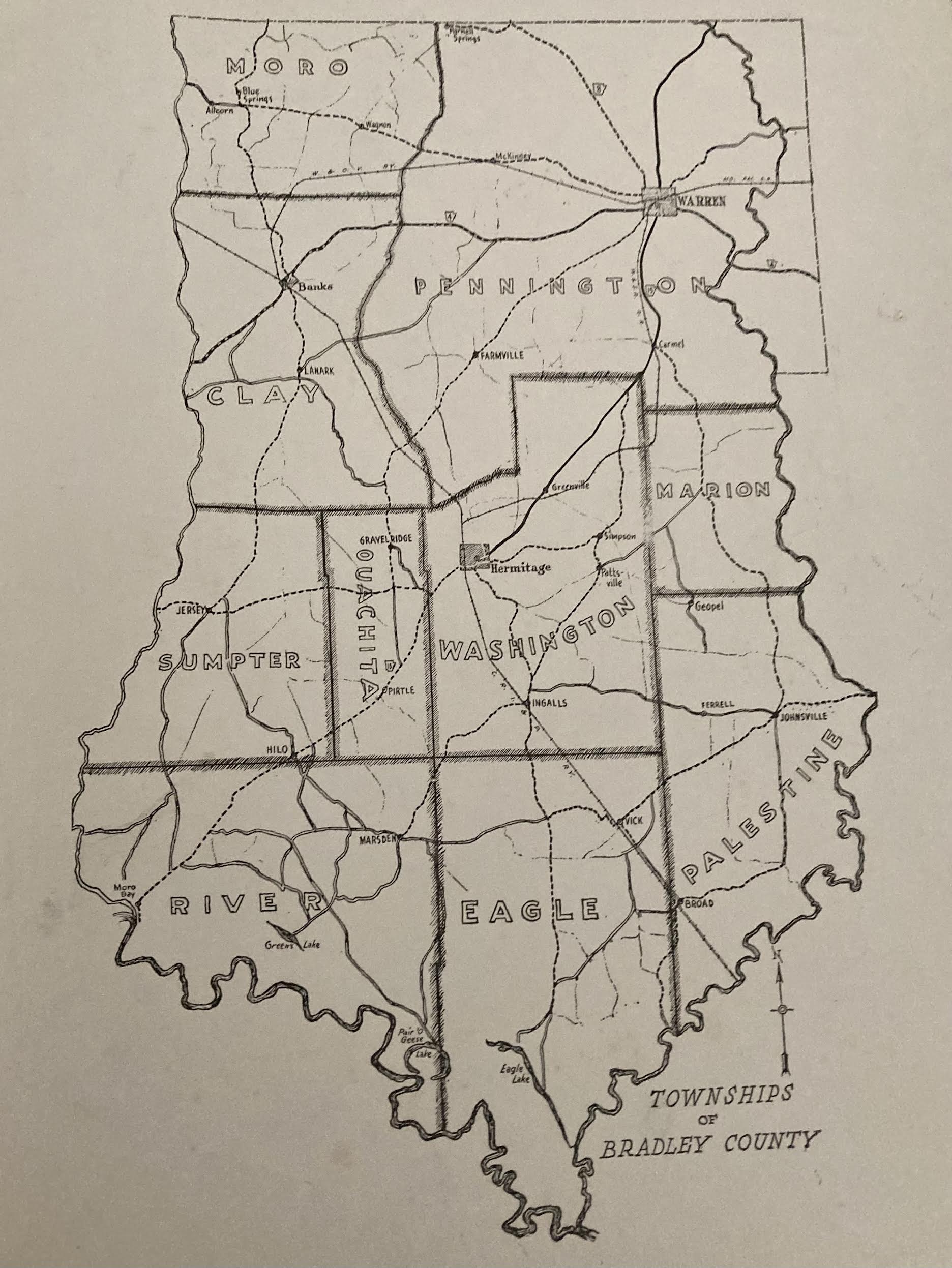The awfully oppressive heat always reminds me of the large forest fires on record in Bradley County, especially two remembered by a few as the “Vick Burn.”
This week, Bradley County is in the “moderate” category for fires, according to the Arkansas Forestry Service.
The “first” forest fire in the vicinity of the Vick community was in the early 1940s, according to several long-time Bradley County residents, including Hilda Thornton, 91, who grew up in Vick.
Several of the old timers talked about the thick, lingering smoke that lasted for weeks after the original fire was extinguished. For the next several years, log harvesting in the area was suspended with the county roads being harder to maintain (i.e., grade with grading machines) in the water and wash outs were more frequent.

The original “Vick Burn,” was a forest fire of suspicious nature, but one where several thousand acres of timber were burned. It was a devastation to the area wildlife, especially the white-tailed deer, small fur bearing animals, such as fox, raccoon, mink, and even beaver.
For decades after the “Vick Burn,” hunters and trappers alike, avoided the area as the burnt over forest land was lacking in game and fur.
The late Curry Martin, who walked more of the woods in Bradley County, other than local timber scouts for the lumber companies, told me in the early 1970s there were still significant fire scarring in the thick woods in and around Vick and Broad, especially along the Rock Island & Pacific Railroad spur coming south out of Warren and traversing the area all the way to Crossett.
Today, I am not sure if that railroad line, once called the Fordyce and Princeton spur, is still active.
Consulting local County forester, James Wall of Hermitage, there have been two “Vick Burns,” one in the early 1940s and the second one August 31-Septemer 1, 2000.
Both were significant fires resulting in loss of timber, animals and native vegetation.
And both causes of the fires were, and still are, unsolved.

Wall, who is the Bradley County Forester, has been a 29-year employee of the Arkansas Forest Service and the county forester for the last three years. He was on the scene when the 2000 Vick Burn took place.
The first day it (the fire) burned about a good 1,000 acres, he said. The second day, September 1, another 1,000 acres went up in smoke. The Arkansas Forest Service fire fighting crews and local rural fire crews were on the scene for about a week putting out “hot spots,” and “flare ups.”
Wall said the speed of the fire and the direction of the winds, aiding in the fire spreading, can still be seen on some of the old growth timber in the area.
In the larger, old growth timber, after a burn one would see a low pattern of scarring on the timber with the fire being higher on the back side of the trees, he said.
He also acknowledged that a quick fire would indeed deplete or cause the native animals to flee the area.
In Bradley County, forests occupy 367,901 acres (or 88%) of the land area in Bradley County, and 94% of the forests are privately owned.
Planted forests account for 65% of the pine and 5% of non-pine forests in the county.
Overall, 56% of all the forests in Bradley County are natural forest, not planted or planned, but rustic forest lands.
The forests of Bradley County contain 12,476,345 tons of softwood timber and 6,333,340 tons of hardwood timber.

Forest industries contribute $90,110,832 to Bradley Country’s GDP which is 24% of the county’s total economic activity.
This is a much higher percentage than the state-wide average of 4.95%.
Notable forest industries in Bradley County include Potlatch-Deltic, Armstrong Hardwood Products, Ouachita Hardwood Flooring, Oasis Trading, and Price Fibers.
There are by the 2021 timber industry report, some 16 logging firms in Bradley County.
Income in Bradley County’s forestry sectors is 129% of the county average.
The direct economic contribution of Bradley County’s Forest industry is
Softwood or Pulpwood $3,448,514 or 18% of the total.
Softwood of sawtimber is valued at $9,027,832 or 48%;
Hardwood Sawtimber is valued at $5,060,415 or 27%;
Hardwood Pulpwood is valued at $1,272,925 or 7%;
Bottomland Hardwoods are valued at $49,497 or 13%;
Other – Non Stocked timber contributes $12,096 or 3%
Sector Employees Labor Income or a Value Added (GDP) of $90,110,832 to Bradley County can be broken down as follows:
Forestry jobs for 14 employees of with a labor income of $908,694 or a value-added total of $923,307’
Logging generates 243 jobs, valued at $13,514,325 or value-added at $13,432,541
Solid Wood Products produces 646 jobs, valued at $37,630,517 or value-added to $67,890,057
Furniture 1 $5,555 $5,881
Pulp and Paper 36 $2,885,515 $7,859,046
Forestry Totals in Bradley County
940 $54,944,606 $90,110,832
Timber Supply around Bradley County is certainly significant, within a 1-county radius around and including Bradley County (Ashley, Cleveland, Drew, Calhoun, and Union) there are 106 million tons of pine and 52 million tons of hardwood timber.
The above information comes from the 2021 Bradley County Forest and Industry report from Dr. Matthew Pelkki at UA-Monticello in the Arkansas Center for Forest Business, an annual newsletter published by him at UAM. He can be reached at pelkki@uamont.edu
To keep from another Vick Burn, the Arkansas Forestry Department has daily airplane crossings all over the forests of Arkansas. The remaining fire tower at gravel ridge, a 110-foot metal lookout post, is mainly used today as a radio repeating tower for all communications of the forest service.
I have hunted in the Vick area before and recall the thickness of the pristine forest there. That is the Pastime I want to remember. So, let’s all be careful in these times of fire warnings – even if it is a moderate red flag warning.


